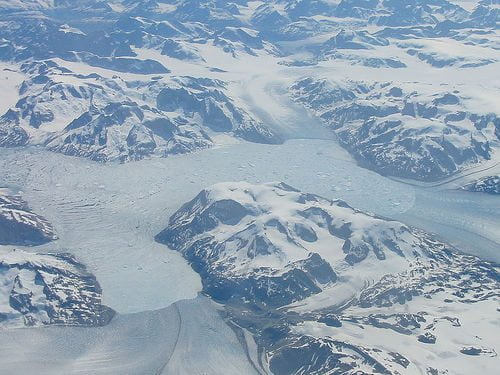

Environment
Climate change may ‘green’ Greenland by 2100, say scientists
Climate change could lead to a greener Greenland by the end of the century, scientists have said.
As temperatures in the Arctic rise, plant life in the region is beginning to take advantage. A study, published in the journal Philosophical Transactions of the Royal Society B claims that satellite images show that trees and shrubs are already spreading to previously uncovered areas. It is predicted that this in turn could alter the climate system leading to faster vegetation expansion.
Eighty per cent of Greenland is currently covered by the only ice sheet that exists outside of Antarctica. There are currently only four native species of tree and large shrub on the island, and they are only present in the south.
But by the year 2100, lush forests could be covering much of Greenland’s surface, even in the north, the scientists predict. With expected levels of warming, around 44 species of North American and European trees and bushes will be able to thrive in Greenland.
The scientists even predict that the conditions exist for Greenland to be significantly greener today, but say it can take a long time, potentially thousands of years, for some species to ‘immigrate’.
Prof Jens-Christian Svenning, from Aarhus University in Denmark, the lead author of the study, said that Greenlanders could speed this process up by planting decorative fauna.
“People will often plant utility and ornamental plants where they can grow; it lies in our human nature,” he said. “Such plantings could get a huge impact on the future Greenlandic nature as a source of dissemination. This certainly has positive aspects.”
A significant amount of greening is likely to transform Greenland’s ecosystem, possibly leading to the loss of Arctic animals and plants. However, Svenning added that such a change “will provide new opportunities for Greenlanders.” The greening could bring commercial benefits thanks to agriculture forestry or tourism.
In July, Greenland experienced its highest temperature since records began in 1958, when highs of 25.9C (78.6F) were measured at Maniitoq Mittarfia, near Baffin Bay on the west coast.
Scientists have previously calculated that if the average temperature in Greenland increased by 3C (5.4F), its ice sheet would begin to melt at an abnormal and potentially catastrophic rate.
If it were to melt completely, the world’s sea level would rise by more than seven metres. Even a partial melting could have disastrous consequences for low-lying countries like Bangladesh and the Maldives.
Further reading:
Arctic Ocean more affected by global warming than Antarctic
‘Unprecedented’ warmth of Arctic in 2012 saw ice melt to record low
Greenland experiences ‘record high’ temperatures
Comprehensive study shows extent of ice loss increase
The Guide to Climate Change 2013


 Environment10 months ago
Environment10 months agoAre Polymer Banknotes: an Eco-Friendly Trend or a Groundswell?

 Environment11 months ago
Environment11 months agoEco-Friendly Home Improvements: Top 7 Upgrades for 2025

 Features9 months ago
Features9 months agoEco-Friendly Cryptocurrencies: Sustainable Investment Choices

 Features10 months ago
Features10 months agoEco-Friendly Crypto Traders Must Find the Right Exchange




























